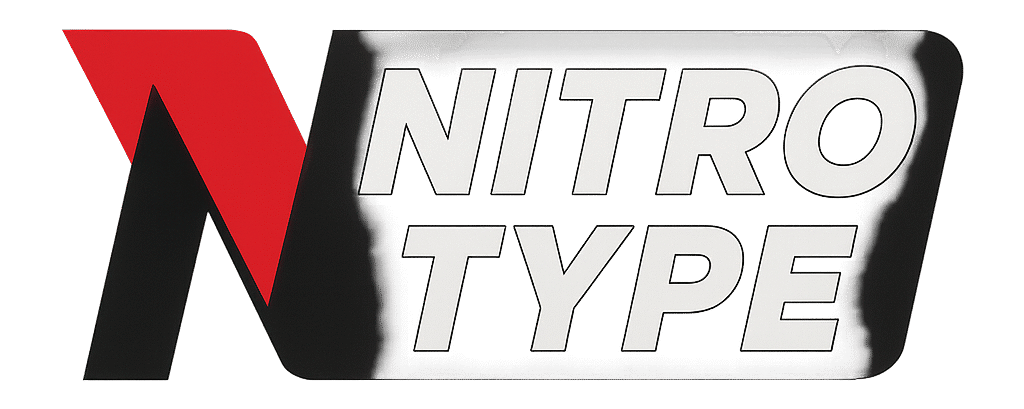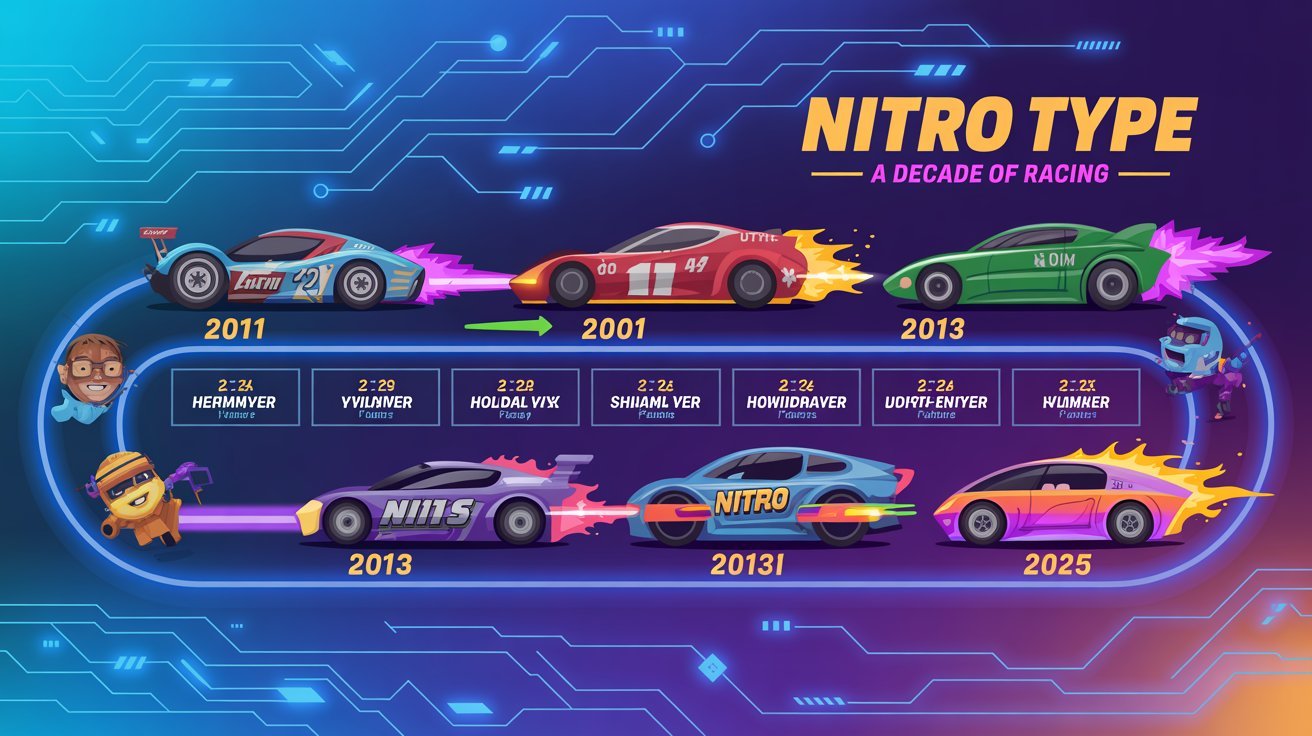Nitro Type History: The Evolution of Online Typing Races from 2011 to 2025
Introduction: Tracing the Legacy of Nitro Type
Since its debut in 2011, Nitro Type has evolved from a classroom typing tool into one of the most beloved browser-based racing games in the world. What began as an educational typing practice platform has transformed into a competitive social game filled with achievements, seasonal events, virtual cars, and dedicated communities. As of 2025, it has become a significant part of the typing education and gaming space, influencing millions of students and typists worldwide.
This article explores the Nitro Type history in detail, from its early development to its peak popularity and ongoing transformation. Whether you’re a seasoned racer or just discovering the platform, this historical guide will deepen your appreciation of the game’s innovation and impact.
1. The Launch of Nitro Type (2011): A New Typing Race Begins
Nitro Type was officially launched by Austin Butler and his team at Teaching.com in September 2011. It was designed with one goal: to make typing fun and competitive. Unlike traditional typing tests, Nitro Type gamified the experience by placing players in high-speed racing scenarios where every correct word boosted their car forward.
During its early beta phase, Nitro Type included:
- A simple racing track with animated cars
- Real-time multiplayer racing
- A growing catalog of typing texts
- Basic car customization and achievements
This early release was already a hit with educators and students. Its clean, colorful UI and game-like mechanics turned dull keyboard drills into exhilarating races. Students began competing not just for faster typing speeds, but also for better cars and seasonal rewards.
2. Expanding Features and Player Base (2012–2014)
By 2012, Nitro Type introduced several game-changing features:
- Friends and Teams: Players could now add friends and join teams, creating social dynamics and fostering competition across classrooms and communities.
- Achievements: A series of in-game challenges encouraged players to reach specific milestones.
- Dealerships and Car Customization: Users could now buy and paint cars to express their personality and style.
Between 2013 and 2014, the platform’s popularity exploded. Teachers began using Nitro Type in schools globally as a free, fun way to teach typing, leading to millions of new users. According to the Nitro Type community, 2014 alone saw over 2 million new players and nearly 80 million races completed.
This era was the foundation of what made Nitro Type great: social competition, unique rewards, and educational value.
3. Nitro Type 2.0 and UI Upgrades (2015)
In April 2015, Nitro Type launched Version 2.0, a complete overhaul of its interface. This update brought:
- A sleeker, more modern dashboard
- Improved race track visuals
- Simplified navigation for mobile and desktop
- More detailed user statistics
The Nitro Type 2.0 update also added Nitro Cash bonuses, expanded team stats, and the foundation for future seasonal events. This was a turning point, showing that the developers were listening to player feedback and continuously improving the platform.
4. Seasonal Events and Rare Cars (2016–2019)
Between 2016 and 2019, Nitro Type introduced themed events such as:
- Xmas Season
- Back to School Challenges
- Anniversary Celebrations
- Spring Fling Events
Each event included exclusive cars, team rewards, and limited-time achievements. This increased player engagement and introduced the concept of limited edition cars, some of which have become digital collectibles.
These events also led to the rise of legendary teams, where top players competed in weekly leaderboards. The game saw its highest levels of competition during this period, with some players reaching over 200,000 races.
5. Unlimited Nitros and Version 3.0 (2019–2020)
In late 2019, Nitro Type shocked players by removing restrictions on nitros—one of the most strategic elements of gameplay. While previously players were limited in how often they could use nitros, the new model allowed unlimited usage but adjusted the reward system accordingly.
Shortly after, Nitro Type launched Version 3.0:
- A complete redesign of race animation
- Real-time profile tracking
- Enhanced anti-cheat detection
- Improved car animations and sound design
This update set the stage for the 2020s and prepared the platform for mobile optimization and larger-scale events.
6. The Rise of Nitro Pass and In-Game Economy (2020–2022)
The introduction of the Nitro Pass—a battle-pass-style reward system—was a major milestone. Players could earn rewards such as:
- Rare cars
- Unique titles
- Custom race trails
- Nitro Cash
This new system fueled in-game economic strategies. Players started focusing on grinding races or completing daily challenges to earn Nitro Pass rewards quickly. The platform even saw the rise of YouTubers and Twitch streamers sharing strategies to optimize Nitro Cash collection and race performance.
7. Bot Controversies and Fair Play Challenges (2021–2023)
As Nitro Type grew in fame, it also attracted negative attention—specifically cheaters using bots. These programs could auto-complete races at inhuman speeds, giving certain accounts an unfair advantage.
To combat this, Nitro Type developers:
- Suspended suspicious accounts
- Introduced CAPTCHA for random players
- Adjusted reward algorithms
While this did reduce botting, some top players left the platform, citing an unbalanced experience. The developers’ ongoing battle against botting became a recurring topic across Reddit and community forums.
8. The End of Seasons: A New Chapter Begins (2024–2025)
In early 2025, Nitro Type retired the seasonal model. Instead of prolonged multi-month seasons, the developers shifted to event-based gameplay. Each event offered:
- Unique cars and cosmetics
- Limited-time leaderboards
- Story-driven race scenarios
This shift emphasized engagement over grind. Events were more dynamic, lasted for shorter periods, and rewarded skill more than sheer repetition.
9. Cultural Influence and Typing Education
Nitro Type’s impact extends far beyond gaming. It has been widely adopted in schools as a typing literacy tool. Its gamification of learning has:
- Improved typing speed and accuracy in children
- Encouraged friendly classroom competition
- Created a bridge between fun and education
Some educators have even integrated Nitro Type into their daily lessons, citing higher student engagement compared to traditional tools.
Nitro Type has contributed to the popularity of touch typing, a foundational skill that boosts typing speed and accuracy. Learn more about touch typing and why it’s important for students and professionals alike.
10. Nitro Type in 2025: What’s Next?
Today, Nitro Type continues to push boundaries. Upcoming features being tested include:
- Custom car designs by users
- Event-specific game modes (e.g., drag races)
- Integration with mobile apps for on-the-go racing
Community-driven content is likely to become the next frontier. With tools that allow players to create challenges or design their own tracks, Nitro Type may become even more immersive in the coming years.
Final Thoughts: A Legacy of Speed and Learning
From 2011 to 2025, Nitro Type has continuously reinvented itself while staying true to its roots: fun, learning, and fast typing. It has nurtured millions of racers, turned education into entertainment, and built a global community. As the platform enters its next phase, one thing is certain—the legacy of Nitro Type is just getting started.
As Nitro Type continues to evolve with new features and challenges, players can also dive deeper into the ever-expanding car lineup. If you’re curious about how the in-game vehicles have transformed over time and which ones stand out today, explore our Nitro Type Cars Collection for a comprehensive breakdown of rare, cool, and fan-favorite cars.

